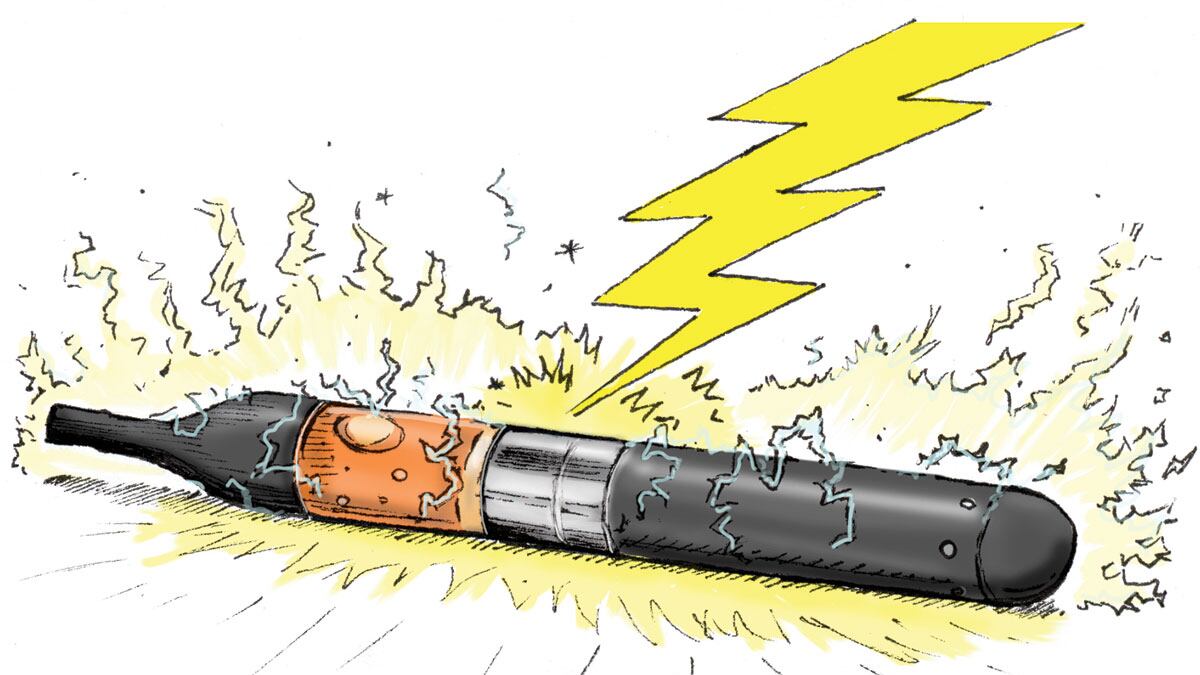Not long ago, somebody told me that in the very near future we'll be referring to cannabis flower as "pre-run."
I didn't really buy this oil-centric view of the world, in which good, old-fashioned bud was destined to be crushed by the march of technology and ground up by modern consumerism.
But…I sure prefer it. After two years of access to pretty much everything out there, I've lately found myself barely interested in flower. Loading the Pax 3 seems so labor intensive. Rolling a joint? It requires such a huge outlay of time and resources.
In the end, I think we might all end up puffing on pre-filled oil cartridges. No muss, no fuss, no lingering stench, no fire, no smoke. So discreet, so effective.
The only potential annoyance? Batteries.
And so we conclude Vape Awareness Month with a discussion of the thing people least think and talk about when it comes to cannabis vaping: the 510 battery.
Most pre-filled oil cartridges have what's called a 510 thread. The cartridges screw onto a rechargeable battery. Some of those batteries have buttons, others heat up automatically when you draw. Some batteries have multiple temperature settings, others heat to a preset temperature.
After asking a dozen people in the local cannabis scene—budtenders, head-shop clerks, writers, cannageniuses—if they have a favorite of these batteries, or know anyone who recommends one, I have concluded that no one knows anything. And that it may be unknowable.
I've identified a few general species of 510 battery to look for. Such batteries are sold under different brand names but often appear to come from the same Chinese factories. Here's what I know about them.
O.penVape
$20 with charger, openvape.com.

Long and narrow O.penVape batteries are the skinniest on the market and often the cheapest. They're best known for the distinctive rubber tip, a stylus you can use to play on your phone between puffs, and for being the house battery for the moribund Golden brand, an aggressive industry leader in the early days of legalization and now off the shelves. You'll find the brand name O.pen at high-end shops like Serra, but you can get knockoffs for as little as $5 on Amazon. The big downside? You need to treat O.pen batteries as semi-disposable. In my experience, they'll start to weaken after 10 or so charges and may totally die not long after that. They can also act weird if you drop them. There's now a luxe version 2.0 retailing for $40, but I'm wary given the history.
KangerTech Evod
$40 with charger, kangeronline.com.

The newer go-to for vape cart makers, you'll find Evod batteries everywhere, including at Mary Jane's House of Glass, where various sizes run between $15 and $25. I call these guys "thickies" because they tend to be stubbier than their competitors. They're also powerful, reliable and durable, and have a second thread size on the outside of the tube so they can handle the eGo-size atomizers popular with nicotine vapers.
The Dopen
$59.99 at thedopen.com.

It's the same width, and has the same threading setup, as the Evod. The battery seems the same, too. And yet, it costs $60? Well, it's kinda worth it. The Dopen, from Dope Magazine, is topped with a clipped cap resembling a fountain pen that keeps the mouthpiece clear of lint and protects pockets from leaky cartridges. It's discreet and durable.
The Pax Era

OK, so it's not technically a 510, but it's the next generation of USB-charged cannabis oil micropens. Pax makes next-level hardware so sleek, so intuitive, so durable. We like its lightweight Juul e-cigarette so much we once hacked it to be a cannabis cartridge. Well, Pax finally got the memo and made one of its own, with pre-filled cannabis cartridges. The bad news? Those cartridges are sold only in Colorado right now. We've played with one, though, and can attest that it's poised to take this market by storm when it becomes available.
